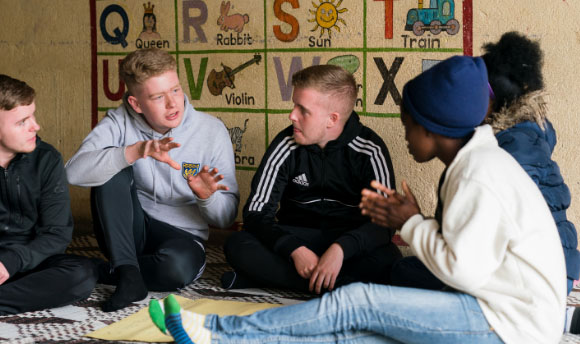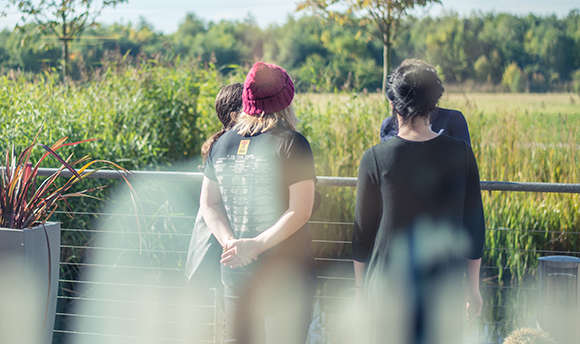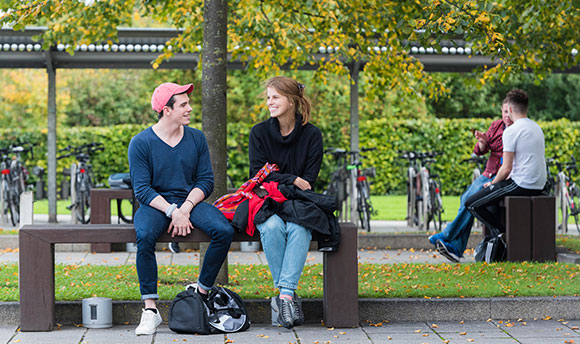Last year I was in a position to reflect with some of our UK, Lebanon and Jordan-based Refugee Hosts researchers on strategies to ensure that our work has appropriate policy influence. The first was in a seminar room at University of St Joseph’s in Beirut, when we were jointly considering emerging themes from our fieldwork in Jordan, Lebanon and across Europe and discussing their implications. The second was when two members of our Jordan research team – Rahmeh Abu Shweimeh and Sura Al-Mahasis – were representing our project as part of the Mobilising Global Voices 2019 conference, and in the afternoon were in the audience for a session I was invited to lead at the UK House of Commons for researchers from the Global South on my experiences as a government adviser. The two settings symbolised well my current ‘shuttling’ between the worlds of academia and policy-making, and led me to consider what I am learning at this interface, particularly with respect to the sort of interdisciplinary work – incorporating semi-structured interviews, participatory workshops and creative writing sessions – that the Refugee Hosts project is pursuing.
Following such considerations, I have come up with a rather prosaic image of the importance of – and linkage between – two rather different forms of knowledge: bricks and visions. The most obvious bricks associated with the Refugee Hosts work at present are the interview transcripts that provide insights into the experiences of both those people who have been displaced in the course of the Syria crisis, and of the members of communities hosting them. But there are many other forms of ‘bricks’ that have emerged through the project, including tools developed by and with locally based researchers, objects that refugees and hosts brought to participatory sessions and writing workshops to symbolise their experiences – a necklace of a lost relative, a garment for a child growing up in a new environment – as well as verses they composed that speak of longing, regret and hope. Bricks are clearly suited to construction, linking up to become something larger. But before we go there, consider the substantive, concrete qualities of a brick in its own terms. A tool. An object. A statement. I have found policy-makers hungry for these, bringing exposure to vivid, earthy reality so as to ground understanding. We should not underestimate the authenticity and authority of the researcher bringing these materials into the public domain.
But how to align those bricks? Visions are clearly important here. But the plural emphasis is critical. Most people will recognise how personal, political and, indeed, disciplinary, interests shape the construction – and thus the diversity – of visions, piecing together an ‘account’ of displacement and hosting for those people impacted by the Syria crisis. These visions will typically be competing and contesting rather than complementary. So what is the role of the researcher here? I suggest it is determined by three principles: authenticity, collaboration and imagination.
Authenticity means respecting the bricks that are available. Not ‘cherry-picking’ some. Not ignoring the inconvenient. An openness to available material.
Collaboration means working with the bricks that others have brought and drawing on their visions of how they may fit together. This has been hugely important in the Refugee Hosts work that has brought together senior researchers from very diverse disciplinary backgrounds (including anthropology, public health, literature and theology) along with locally-based researchers with equally diverse disciplinary backgrounds (including from the humanities and public health) and different experiences both of displacement and of conducting research in the Middle East.
Imagination then means seeking a vision that frames issues not just in a way that seems plausible, but that identifies clear points of action for diverse audiences. I am grateful to Cornel West for making me aware of the implications of Walter Brueggemann’s work on prophetic imagination for researchers and their role in articulating a vision for an alternative future:
Imagination is a danger, thus every totalitarian regime is frightened of the artist. It is the vocation of the prophet to keep alive the ministry of imagination to keep on conjouring and proposing alternative futures to the single one the king wants to urge as the only thinkable one.
At the mid-point of the Refugee Hosts project’s work, we have enormous piles of bricks and some fragmentary, emerging visions. My hope and prayer is that we retain respect for the connection between the two. Recently, I shared with the Refugee Hosts research team the history of a piece of my research that has – against all expectation – possibly had the biggest policy influence. My work with Alison Strang on a framework for refugee integration – recently re-launched with the further input of a number of researchers – had a very ‘bumpy ride’ through the peer-review publication process. It was critiqued rather sniffily by one reviewer as ‘mid-level theory’. Frankly, I don’t consider it my best work. But it has now been cited over one thousand times by researchers working across the Americas, Europe, Africa, Asia and Australasia and has informed policy in these contexts.
How and why did this happen? For two reasons, I believe. Firstly, it articulates a (modest) vision of the experience of integration that imagines rights and safety, and social connection, as pertinent outcomes alongside employment, education and accommodation. It is a vision that many – researchers, policy makers, members of refugee community organizations alike – have been able to relate to, stirring some engaged, critical debate. Secondly, this vision is transparently linked to some very concrete constructs, experiences and measurement tools. There are plenty of bricks there for others to take so that they may use whatever is useful for their next construction.
I think there is potential within our Refugee Hosts work – and across the diverse community of writers, photographers, activists, humanitarians, policy makers, researchers and people both affected by and responding to displacement, who are engaged with it – to be similarly, if not more, impactful: telling a story with bricks and visions.
An earlier version of this piece was published on the Refugee Hosts website, in July 2019.

By Professor Alastair Ager







